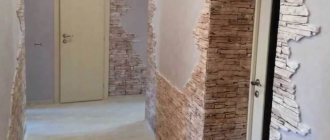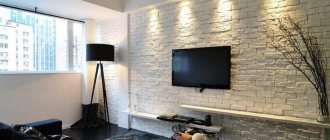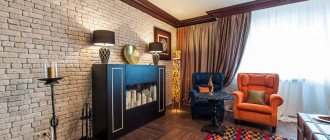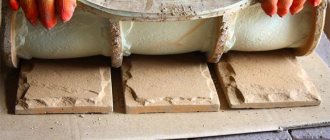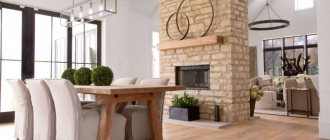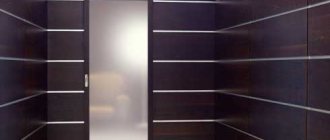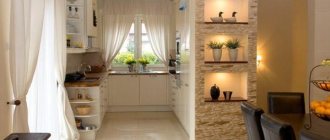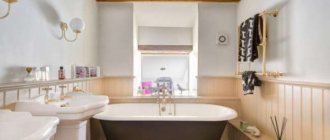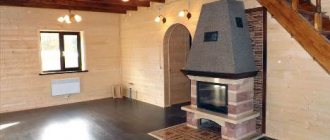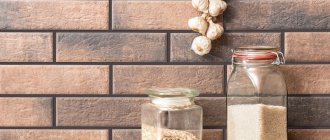Types of decorative bricks
Decorative brick is a kind of symbiosis of artificial stone with tiles. There are different types of this finishing material: based on cement, gypsum, clay, etc. The area of use of finishing is very wide: from corridors, kitchens and living rooms to offices, from exhibitions to warehouses. The difference between decorative brick and artificial stone is that the latter has a relief surface. The brick shape is rectangular. Rounding corners is allowed. Many manufacturing companies, taking into account the particular styles where this material can be used, produce artificially aged cladding. Let's look at its main varieties.
Clinker
This type of decorative brick is the most expensive. A clinker coating is made from clay. Thanks to special firing technology, the material acquires special strength and hardness. Firing helps to obtain a varied and completely unique color palette. The outer surface of clinker bricks is smooth. This type of finishing is equally suitable for interior and exterior cladding. Due to the fact that clinker tolerates temperature changes well, it is used to decorate corridors, the facade of buildings, fireplace areas and chimneys. Unit size of clinker brick cladding:
- Width – 160-190 mm;
- Height – 60 mm;
- Thickness 20±5 mm.
In addition to flat tiles, they also produce corner tiles.
Brick based on gypsum and cement
The principle of manufacturing finishing material is as follows. The prepared solution is poured into molds. After the mixture has completely set, it is released from the mold and dried. In essence, the technology is the same as for the manufacture of decorative stone, but individual elements resemble bricks in size and shape. Gypsum-based finishes are not moisture resistant. It is used in dry rooms. The strength of cement-based products is much higher. They can be used for outdoor work and in wet areas. Brick produced by hand molding has a textured or simply rough surface.
Ceramic brick
This version of this material is the founder of the entire production, since the production of decorative bricks began precisely from ceramics. Such bricks are no different from ordinary ceramic tiles, which have been used for many years in a row to cover bathrooms and to construct kitchen backsplashes. Just like gypsum decorative bricks, ceramic ones can have several options for the outer surface. These include matte, glossy, concave or convex effects.
Laying features - what should you know?
So, you have made your final decision about decorating the room and now you want to find out what is better - to make decorative bricks for interior decoration yourself or to purchase it? Should you seek help from specialists or do everything yourself? When answering all these questions, it is necessary to take into account the lack/presence of knowledge and skills, as well as your financial capabilities. The time factor also plays an important role. Be that as it may, remember that professionals will do the job better and faster. Anyway.
If you decide to do everything yourself, then when choosing materials and raw materials, be sure to take into account the seller’s recommendations. He, having all the required information, will help with the selection of everything necessary - dyes, the brick itself, glue, mastic and tools, so that no difficulties or disappointments arise in the process. We also recommend that you consult with the seller regarding the preparation of molds, preparation of the mixture, time and conditions for drying the coating, and other important points.
Note! If you cannot get answers to all your questions in the store, then it is better to contact another retail outlet that will be able to provide full consultation.
And if you decide to hire professionals for the work, then you will have to coordinate the project, financing, monitor the timing and quality of implementation.
As for the cost of decorative bricks, it can vary depending on a number of factors, including the specific type and quality of raw materials, the reputation of the manufacturer, and production technology. You should not ignore discounts and trade margins, which also affect the final price. As an example, we recommend that you familiarize yourself with the average market value of some collections from popular manufacturers. For the convenience of site visitors, the information below is presented in table form.
Table. Prices for decorative bricks
It is also worth noting that the scope of this article does not allow us to cover the entire available range of the finishing material described. And the problem is aggravated because each of the collections consists of several sets that differ from each other in color.
Note! When coordinating projects for individual elements or rooms, consider whether the materials offered by the designers can be purchased nearby and whether they are supplied to order. In this case, everything will be done on time, and the total amount of repairs will not be very large.
Video - Making decorative stone
Use in interior decoration
Wall decoration with decorative bricks is used not only for the exterior design of buildings, but also for interior spaces, both residential and public. Ease of installation and external features allow the material to be used when finishing complex and non-standard surfaces. Using imitation brickwork, they highlight openings, arches, decorate architectural elements or make accents. Interior walls with imitation brick, painted in restrained natural tones: black, beige, white, gray or cream, look good.
Living room
Walls decorated with brickwork look original and very beautiful. This decoration fits especially harmoniously into styles: modern, grunge or industrial (loft). Such an accent wall can serve as an excellent backdrop for placing a large TV, unusual panels, futuristic paintings and designer furniture.
Dining room, kitchen
Here, in addition to the aesthetic appearance, such properties of the coating as durability and practicality are exploited. A kitchen apron made of decorative brick tolerates humidity and temperature changes well, and is easy to clean. Over time, it does not lose its original attractiveness. Brick looks good in modern and classic styles.
Bedroom
Designers recommend using this material in the bedroom interior in small quantities (for example, to highlight window and door openings, to decorate an accent wall at the headboard or opposite it). It can be a brutal loft interior or a charming eclecticism, a play on contrasts. In this case, rough brick contrasts with elegant furniture and delicate textiles of curtains and bedspreads.
Use for outdoor decoration
Using decorative facade bricks without seams, it will be possible to renovate the walls of an old building, insulate the interior of the room, and prevent the destruction of the structure. Cladding sheets are lightweight, so the load on the building foundation is minimal. It is recommended to use White Hills decorative bricks for cladding walls, plinths, window openings, fences, and landscape flower beds. Brickwork is carried out on previously cleaned and primed walls. The sheet is attached using a cement adhesive mixture. To decorate the corner part of the building, it is recommended to use special corner decorative bricks that match the tone of the main masonry or differ in color, creating contrast.
The white antique brick of the “Naples” collection will add sophistication and rigor to the structure. And if you want to build in the style of an old, time-tested house, it is better to use decorative bricks from the “Chester” collection.
Styles suitable for brickwork
First of all, brick cladding is associated with the loft style. Nowadays, industrial style or imitation bohemian housing has moved into ordinary apartments. Imitation of aged brick masonry can be used as an interior accent, to highlight the area behind the bed or sofa, decorate niches, etc.
Another style that fully allows the use of bare brick is country style, which creates the atmosphere of a hunting hut, a cottage outside the city, or the “house in the village” familiar to everyone from advertising. The brick-lined area of the stove or fireplace turns out to be especially interesting and functional. The combination of a “raw” surface with natural wood and textile elements made from shreds and “grandmother’s” cotton fabric also has a peculiar charm.
The material has also found application in interiors made in the Gothic and Neo-Gothic styles. They reproduce the atmosphere of feudal castles with numerous columns and pointed arches. Imitation brick is perfect for their design. A chic chandelier with numerous crystal pendants or a giant four-poster bed create a magnificent contrast with the ascetic brick.
By the way, about asceticism. Decorative brick cladding harmonizes perfectly with elements of minimalism. The combination of red, egg, brown or terracotta brick with furniture in neutral colors is especially beautiful.
How to choose a brick for interior decoration
The most important selection criterion is the aesthetic qualities of the material and its compliance with the chosen style. You can create an exclusive, truly unique atmosphere only with the help of brick that perfectly matches the design of the room. You definitely need to inquire about the consumer properties of the material and its technical characteristics. Don't be afraid to experiment with design. The properties of decorative finishing are such that non-standard decoration is guaranteed to you.
Making bricks with your own hands
It is not at all necessary to use natural brick in the interior. If you want to cover a room with a material with an unusual and rough texture, you can use its imitation. Let's consider various manufacturing options.
From plaster
Gypsum is a plastic material that perfectly imitates the texture of natural brick. If you try, the cladding will turn out indistinguishable from natural ones. To make it yourself you will need the following materials:
- Gypsum mixture – dry;
- Brick mold;
- Tile adhesive;
- Water;
- Notched spatula;
- Moistened foam sponge.
The dry gypsum mixture, glue and water are mixed until a mass is obtained that looks like sour cream. The prepared composition is poured into molds. Gypsum hardens very quickly, so there is no need to make too much solution.
To distribute the solution evenly, shake the mold slightly.
You can add acrylic paint to the solution or paint the “masonry” after it is glued to the wall. If desired, the space between the “bricks” is painted with dark paint.
From cement
To make decorative cement bricks with your own hands, you need to prepare:
- Portland cement is white;
- Sand;
- Cardboard;
- Styrofoam balls (you can buy them at a furniture store);
- Reinforcing mesh;
- Sealant on cement.
A tray mold for bricks can be made from cardboard. Its bottom and walls are lined with reinforcing mesh. To prepare the solution, mix sand, polystyrene foam and water in a ratio of 1:1:2. Next, Portland cement is poured until a solution with the consistency of sour cream is obtained. The working composition is kept for 20 minutes. The viscous mass is placed into molds by hand, leveled and left to harden for a day. After hardening, they are coated with a solution for smoothness (3 parts water, 1 part Portland cement and sand). For coloring, use acrylic dye diluted with water. First, the cladding is tinted in a darker tone, then covered with a transparent layer of light paint.
Made from clay and granite chips
Clay is the main raw material for making ceramics. To obtain a good imitation of brick, clay is mixed with granite chips. The molded cladding elements are fired in special furnaces at high temperatures. This is very difficult to achieve at home. This is exactly the case when you should not try to do something yourself, but buy products from respectable manufacturing companies.
other methods
You can decorate the walls “like brick” in other ways. Some companies make trim from MDF and polyvinyl chloride. The peculiarity of these materials is that they are mounted not as separate elements, but as large panels. Installation is carried out on a lathing made of wood or metal profiles. This finish will cost much less than the classic version.
Laying decorative bricks
This process cannot be called too complicated. No special equipment is required for operation. To line the walls, you will only need the following tools and equipment:
- Construction tape, ruler, level;
- Pencil – for marking;
- Hand saw;
- Brush;
- Rope;
- Brush;
- Putty knife;
- Sandpaper for cleaning pieces of brick.
Depending on the location of the cladding, corner or planar elements are used. The use of “corners” creates the impression of solid, high-quality, natural masonry. The number of square meters of material that needs to be purchased is calculated based on the planned cladding area.
Preliminary stage
Decorative bricks need to be glued onto a durable base that has been well cleaned of the old coating. The wall and brick on the back side are pre-treated with a deeply penetrating primer. Before covering the wall, the bricks are removed from the packaging and laid out on a flat surface in order to more carefully select the elements in shade, texture and thickness. The next stage is marking the surface horizontally. This is necessary for correct adjustment of the size of the joining elements. This will save materials and reduce the number of sawn elements. They begin facing with corner “bricks”, provided they exist, alternating short sides with long ones. When installing without jointing, the vertical seams are shifted by at least 50 mm.
Installation procedure
Using a spatula, apply the adhesive solution to the surface of the wall, trying to fill all the unevenness with the composition. Glue is also applied to the entire lower surface of the cladding element with a layer thickness of 1-3 mm. The brick is pressed against the surface of the wall, moving it slightly from side to side. This is necessary in order to provide better adhesion to the wall. The solution should be plastic, but not liquid. If the stone slides a lot, it will be impossible to achieve a strong fit to the surface.
Selecting individual elements by color is an individual creative process, and there is no clear standard here. It is advisable to use “bricks” from different packages. If necessary, the stone is cut using a hacksaw with fine teeth. A fine fit can be achieved using coarse sandpaper.
Design options for rooms
There are some rules to follow when making rooms when using stone. Instructions for decorating the described premises are below:
- Living rooms are always large, and sometimes they are connected to the kitchen. Any masonry is suitable for facing walls with brick, but the Gothic style would be ideal. It is recommended to decorate only one wall with brick, for example, where there will be a TV or a kitchen corner.
- For bedrooms, it is better to use some areas. For example, a brick would be suitable at the head of the bed. For bedrooms it is better to use light textured brick.
- Many people dream of having an office, but it is not always possible to create a separate room, so the classic method of selection is used for this. The brick is used red, but not a bright color to highlight the cabinet. You need to put a profile along the wall and make shelves from the tabletop.
Leveling with sheet material
It is worth considering the lighting in the room where brick is used. Also take into account that brick can be combined with MDF panels, wood, PVC plastic and other materials. The choice is wide, there is also wallpaper; if desired, painting can be done on the brick using a stencil. A photo of decorative brick in the interior will allow you to properly decorate the room.
To work, the walls must be leveled using gypsum plasterboard, plywood, or you can lay stone material on concrete. If necessary, you should insulate the room using polystyrene foam or other insulation. After this, the surface needs to be plastered, the layer thickness is small. The plaster is rubbed down and a layer of putty is applied, and after drying, a thermal panel or stone can be glued.
Laying decorative bricks
For work, a seamless or suture method is used. The seam should be 3 centimeters - the standard; to create it, crosses or a nail or a self-tapping screw are used. The wall should be marked using a pencil and covered with glue, the composition is applied to the tiles, and then pressed against the wall. Some people use silicone glue; they need to cover the wall material with it using a gun. If desired, you can age the tiles; old textures will complement certain designs.
At the end, the seams are unstitched. A special grout is used, the grout is carried out with a syringe, and while the composition is wet, the excess needs to be removed, thus grouting all the joints and seams. The next step is to paint the surface. Only gypsum stones need to be painted. For this, matte or glossy paints are used. A step-by-step master class on how to work can be seen in the video:
